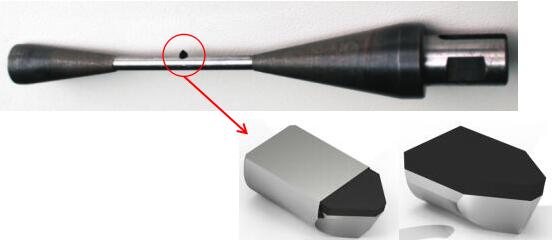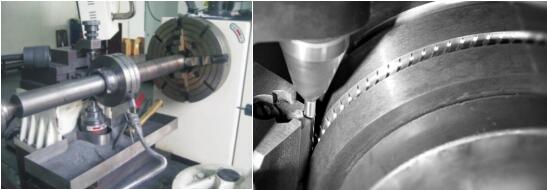The Tungsten carbide roll milling tool mainly introduces the tool for milling the crescent groove. The milling crescent groove is also called the engraved rib, and the diamond milling cutter is also called the PCD notching tools. The position of the cutter is milled out one crescent after another by notching, which belongs to intermittent cutting, and the hardness of the tungsten carbide roll is extremely high, so it is perfect to choose a PCD notching tool.

The following is a picture of the field use of the PCD rotary cutter milling the crescent groove of the carbide (tungsten carbide) roller ring:

The PCD notching tool can be used whether it is a new roll or a repaired roll. The PCD notching tool has two structural options: welding and full face. The diameter is 4mm and above (the maximum is 9mm, and there are more). The welding structure is selected, and the diameter is 4mm. The following are mainly full face. Moreover, generally only 2 milling cutters can be used for the PCD notching tools, so it needs to be replaced with a new notching arbor.
Moreover, based on the practical experience accumulated over the years, Halnn tools has summed up the specifications of the PCD notching tool required for conventional rebar milling crescent grooves.
#6 rebar often adopts PCD notching tool with the following specifications: φ2.0*4.0*0.4*80°
#8 rebar often adopts PCD notching tool with the following specifications: φ3.0*5.0*0.5*80°
#10 rebar often adopts PCD notching tool with the following specifications: φ3.0*6.2*0.6*80°
#12 rebar often adopts PCD notching tool with the following specifications: φ4.0*7.5*0.7*80°
Remarks: Most of the #12 rebar welding PCD notching tools
Cutting speed range of PCD notching tools when processing rebar: Fr=0.05-0.10; N=180r/min (different grades of rollers use different speeds)